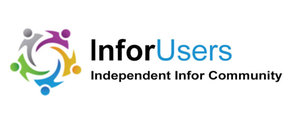Pharmacy Benefit Management Companies Deliver Questionable Value
Pharmacy Benefit Manager (PBM) companies participate in the drug distribution channels as middlemen. Their purpose is to manage prescription drug benefits on behalf of health insurers, Medicare Part D drug plans, large employers, and other payers. They provide the following services:
- Develop and maintain drug formularies for the payers they support.
- Use their purchasing power to drive lower drug prices and rebates for their customers.
- Contract with local pharmacies to reimburse for drugs dispensed to members.
But PBMs may also have an incentive to favor high-priced drugs over drugs that are more cost effective. Because they often receive rebates that are calculated as a percentage of the manufacturer’s list price, PBMs receive a larger rebate for expensive drugs than they do for ones that may provide better value at a lower cost. As a result, people who have a high-deductible plan or have co-pays based on a drug’s list price may incur higher out-of-pocket costs. PBMs do not share all their rebates with the payers, and in many cases, they create spread pricing when they increase the cost of generic drugs beyond what they pay pharmacies. The payment schedules negotiated by PBMs are not shared with payers of employer customers.
In August of 2021, the Pharmaceutical Care Management Association sued the HHS, the IRS, and the Department of Labor regarding a new regulation for PBMs to disclose their net pricing they negotiate with drug companies. This action does not bode well for PBMs who obfuscate their pricing.
Large Employers Band Together to Address Managing High Drug Costs
National employer group the Purchaser Business Group on Health (PBGH) is starting a new company to develop healthcare products for large employers. The venture, called Emsana Health will introduce healthcare cost reduction services by launching a pharmacy benefit manager solution called EmsanaRx. Emsana Health will develop products designed with and for PBGH member organizations, which include Walmart, Costco, Microsoft, Intel, and Tesla. These products will be available to outside companies as well.
Mark Cuban is also getting into the act of creating transparent PBM services. He is creating a company called the Mark Cuban Cost Plus Drug Company with the aim of the PBM to be more transparent about drug costs and share more savings with customers. The PBM will start bidding for clients next year and hopes to be operational in 2023. The PBM plans to share the details of its operating costs with clients and will share 100% of the rebates they receive from drugmakers. This model is designed to build a parallel supply chain with control of all intermediary players to ensure drug pricing transparency at every layer.
The ability of new and emerging PBM services to break up the current oligopoly of PBMs will not be an easy path. Currently, nearly 80% of prescriptions in the US are managed by three PBMs: CVS Caremark, Express Scripts, and OptumRx. Pending legislation allowing Medicare to negotiate some drug prices may be the key for new PBM models to be successful.
PBMs Are the Key to Lowering Drug Prices
US healthcare must provide a transparent view of all pricing for consumers to better manage their healthcare costs. Consumers are now saddled with higher co-pays and other out-of-pocket expenses from payers. One component of increasing healthcare costs are drug costs. Prescription drug prices in the United States are significantly higher than in other nations, with prices in the United States averaging 2.56 times those seen in 32 other nations, according to a new RAND Corporation report. Consumers are driving politicians to address the impact of current PBMs on healthcare drug costs. This will provide new opportunities for new PBM solutions to replace current models. Providers, payers, and pharmaceutical companies must be held accountable for their costs and pricing.
The Players: Emerging PBMs with Transparent Drug Pricing Models
Large employers and the current US political environment will drive new PBM models with transparent pricing and rebate sharing models. The following are two emerging examples:
Emsana Health: works with large employers to design and build solutions that address their unique healthcare needs.
Mark Cuban Cost Plus Drug Company: produces low-cost versions of high-cost generic drugs and providing radical transparency to drug pricing.
Success Factors
- Providers that are self-insured or that offer health plans to their markets should begin to assess emerging PBMs that provide transparency into negotiated drug prices and rebates that can be shared.
- Providers should evaluate emerging PBMs for providing drugs to their hospital pharmacies to assist with lower drug costs for their patients.
Summary
Group Purchasing Organizations (GPOs) have or had similar business models to the PBMs. They refused to disclose their pricing and rebate programs and came under intense scrutiny by the government. The Senate Judiciary Committee’s Subcommittee on Antitrust began a series of hearings that would run through 2006. These hearings lead to the GPO trade group enacting a code of conduct for members regarding pricing transparency.
PBMs are now facing a similar environment relative to their market control and debate on their true effectiveness in controlling drug costs to the benefit of the public. The current social infrastructure bill before congress provides a component for Medicare to begin negotiating drug prices for the Part D program. Payers are likely to drive a similar drug negotiation program with pharmaceutical companies, and that will require PBMs to provide pricing and rebate transparency. The technologies for sharing drug information between manufacturers, payers, and providers demand that PBMs move to a business model that supports transparency of their services to enable more cost-effective healthcare.
Photo credit: Oleg, Adobe Stock


